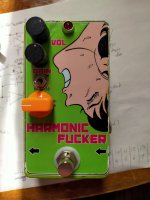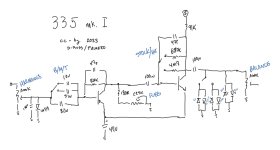Harry Klippton
Well-known member
Talk to me about the harmonic percolator. I've got a board for one (MAE One Knob Clang) that I'll put together soon, but I'm not very familiar with this one other than:
Things I know:
what else is there to know on this one? I'm really just gonna build it cuz it's there and has a low parts count so why not?
what's your favorite example of one in use? Any tips for stuff relating to the circuit? Do you love this circuit?
Things I know:
- Associated with Steve Albini
- Someone holds the rights to the name harmonic percolator and they're tight with it
- There are two versions out there, effectively like an "original spec" one and an "Albini spec" one
- My limited experience with playing one, it sounded absolutely awful. Clangy and metallic in a way that it was hard to see how that's what someone would want
what else is there to know on this one? I'm really just gonna build it cuz it's there and has a low parts count so why not?
what's your favorite example of one in use? Any tips for stuff relating to the circuit? Do you love this circuit?



